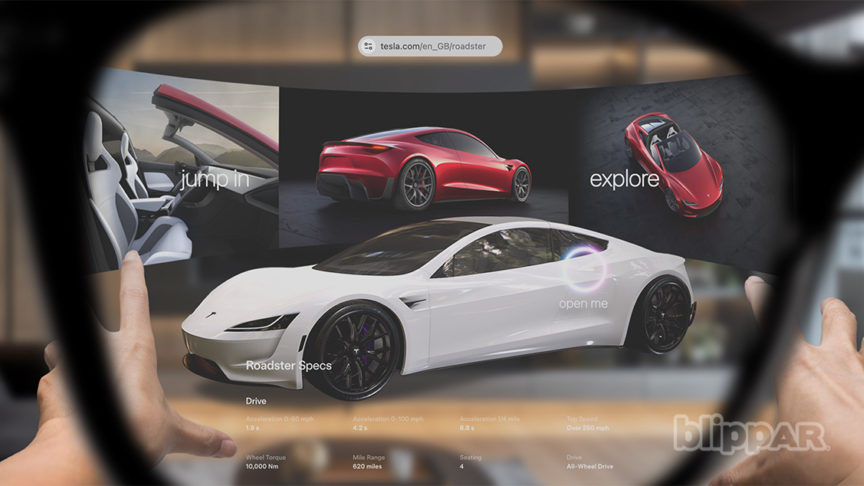While brands have dabbled in augmented reality (AR) for years, 2020 marks the tipping point where it’s becoming an integral part of marketing strategy, helping create meaningful and emotional consumer connections.
AR has finally grown up; once infamous for gimmicks such as face filters on social media, it’s now a cross-platform tool to build truly interactive environments, compared to VR which requires a headset to create computer-aided stimuli. The figures tell us that the global market is expected to grow substantially from $13 billion this year to more than $67 billion by 2024. The technology is graduating from being used solely for entertainment to providing real-world value and utility for marketers through immersive and experiential opportunities. So – in the midst of a global pandemic – what makes this the perfect time for AR to come of age, and how can marketers make use of its unique attributes?
Extensive investment in the ecosystem is laying the foundations for AR’s long-awaited, mainstream emergence. Google and Apple’s mobile tech stacks, ARCore and ARKit, mean more than four billion smartphones across the world are already AR compatible, and Google now includes AR in mobile search. In addition, the imminent arrival of 5G will dramatically boost mobile connectivity, enabling developers and content creators to use approximately 100 times the bandwidth of 4G to build a new type of experiential, 3D environment where users can intuitively interact with the people, objects and information around them.
Alongside these tech developments, the global COVID-19 context is inevitably changing consumer needs and behaviors, increasing demand for the virtual, contactless experiences that can be achieved through AR. And in the near future, wearable tech such as AR spectacles will also join the party to propel evolution in the space even faster.
Here are four ways AR can be a game-changer for marketing in 2020:
Enabling product visualization
In a world where consumers order everything from clothes to cars online, marketers can harness AR to help shoppers visualize products in an interactive and immersive way that goes far beyond a static image or video. This could mean experiencing what it’s like to sit inside a dream car, watching AR panoramas unfold through the virtual windscreen, or seeing what a jacket looks like on the actual shopper, without them having to leave the house.
Augmented Reality enables consumers to explore customization options and the unique elements that a product can offer. Brands that utilize the technology witness up to 8x longer dwell times, as giving consumers control over their digital experiences boosts engagement levels. For instance, participants at an AR smartphone launch can virtually see and interact with detailed specifications and features of the device. AR is certainly not restricted to just online browsing – it has a real benefit in the physical world too, for instance helping shoppers in stores discover how and where the product was made, just by scanning a code –subsequently helping move them along their purchase journey.
Future-proofing education and development
AR enables a more sophisticated, discovery-based form of learning. For example, students in a classroom can engage with virtual, 3D objects to help grow their understanding of certain topics. Teaching concepts such as orbits in the solar system can be optimized using AR-powered, interactive models. Additionally, AR allows for the gamification of learning experiences, helping to boost knowledge retention through educational puzzles and treasure hunts.
The learning benefits of AR also extend beyond the classroom. In mechanical fields especially, the technology can train people how to complete tasks by superimposing the end result on the version the trainee is practicing with. Implementing AR in professional development cases has shown significant improvements to learning curves, creativity, and spatial awareness. In fact, according to a study by the National Training Laboratories, “learning by doing” has shown to increase learning retention rates by up to 75% compared to simply listening to a seminar or lecture. By progressing education onto understanding and experiencing, as opposed to reading and writing, AR offers huge benefits across the industry.
Invigorating interactive advertising
Product visualization, along with other attributes of AR, can be used to deliver interactive advertising experiences that truly connect with consumers and boost conversions by 40%. AR ad units drive far more engagement and dwell time than conventional media and can give digital display advertising a new lease of life. What’s more, the real-time interaction between user and ad enables advertisers to effectively measure the impact of their campaigns and optimize accordingly.
Advertisers have cautiously experimented with AR for years but they have largely added minor elements to traditional campaigns simply to ‘tick a box’. To make the most of AR’s capabilities and deliver real engagement, marketers need to take a different strategic approach and put this disruptive technology at the heart of their ad campaigns.
Superseding live events
At a time when social distancing makes live events and product launches problematic, AR can be used to digitally create immersive and emotionally-charged experiences that generate buzz around a brand. In fact, AR improves upon the in-person experience by allowing marketers to scale events beyond the natural boundaries of any physical location and enable hundreds of thousands of participants from all over the world to share the experience simultaneously. This will revolutionize how audiences engage with live music and sports events in particular, enabling unique forms of interaction.
By augmenting the user’s immediate environment with a digital presentation layer, AR allows users to interact with players and performers in a way that is not possible with a traditional passive offline event, and to be true participants rather than simply viewers. AR reduces the need for traditional physical events and paves the way for a new era of participative, immersive and scalable online experiences, with visceral and emotional engagement.
The perfect combination of tech evolution, advanced connectivity and contextual circumstance means this is the year AR really comes into its own. By taking advantage of product visualization, interactive advertising and immersive digital events, brands can leverage AR as a game-changer for marketing in 2020.
Published in MarTech Series.
Writen by Faisal Galaria, CEO at Blippar.



